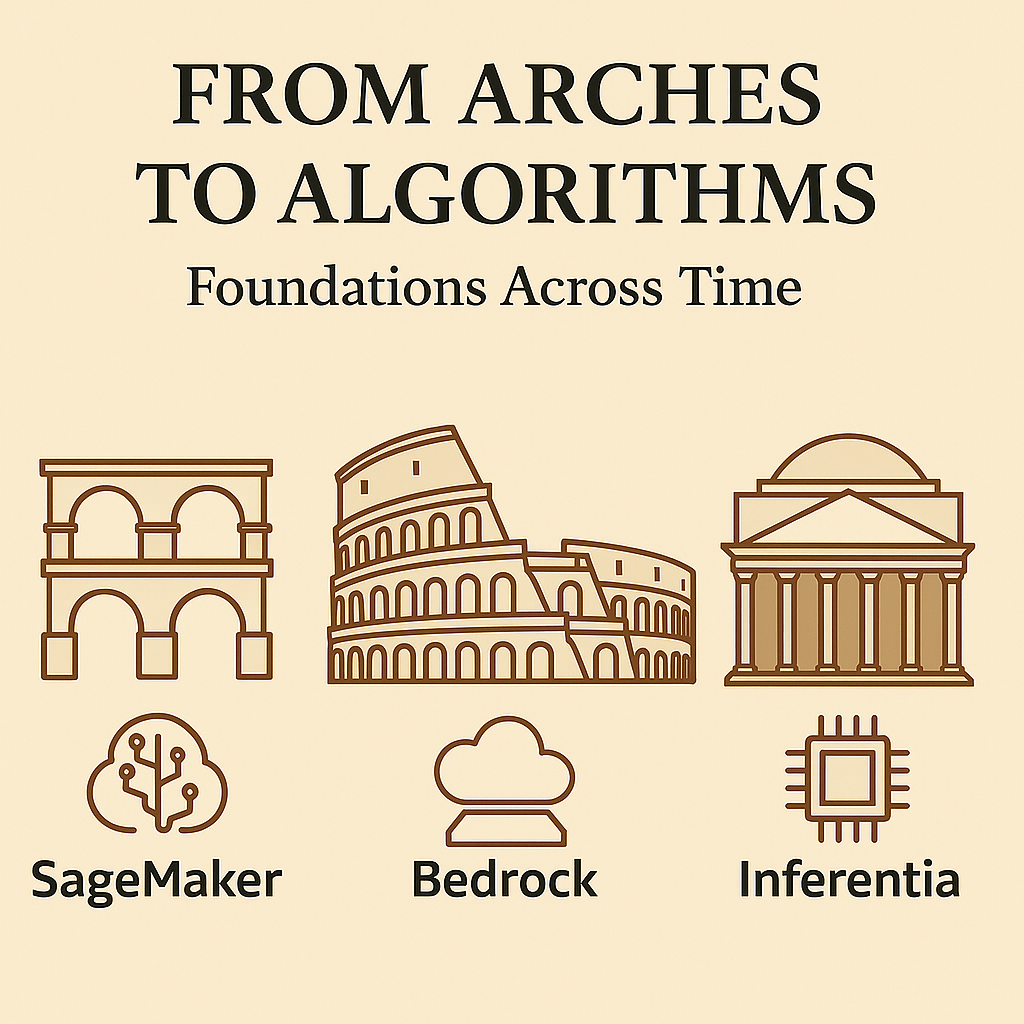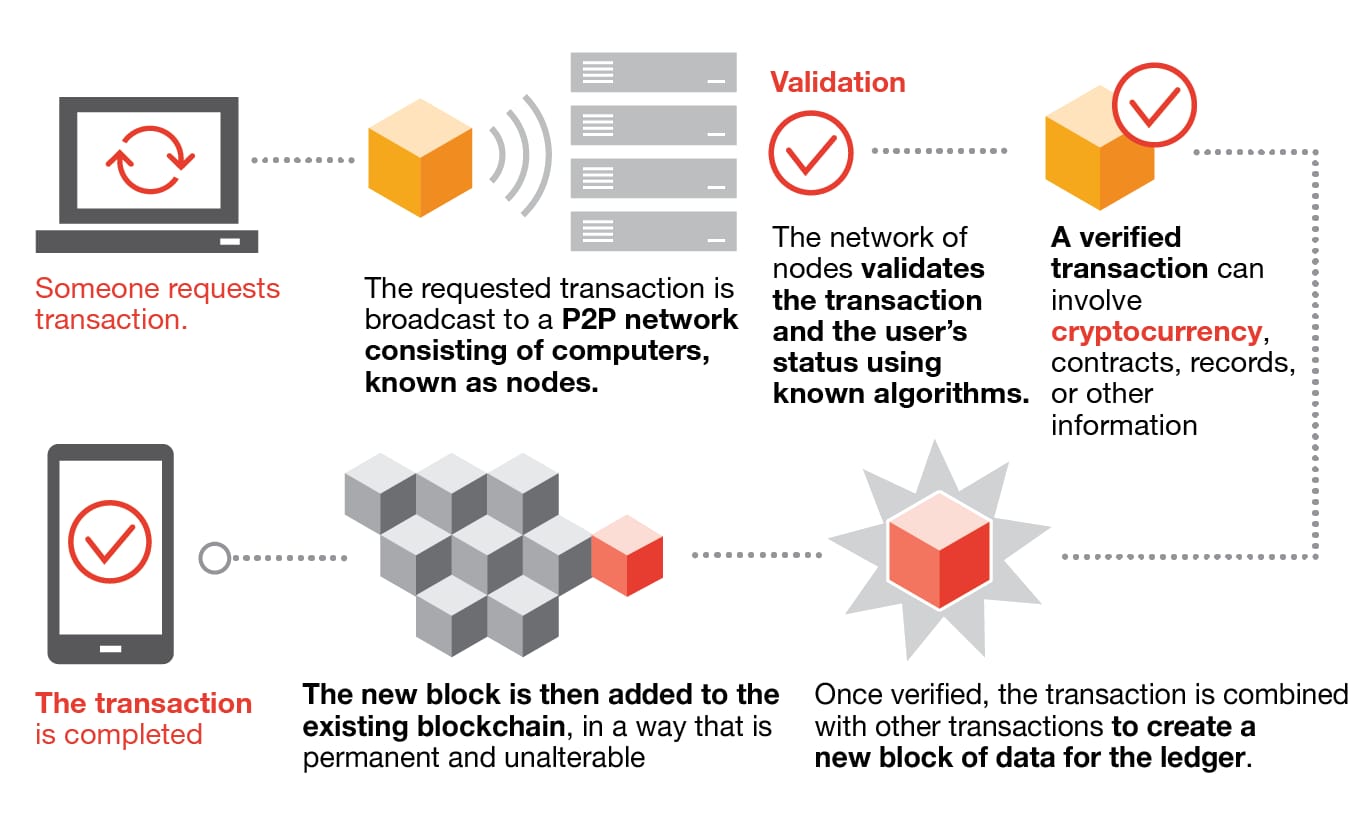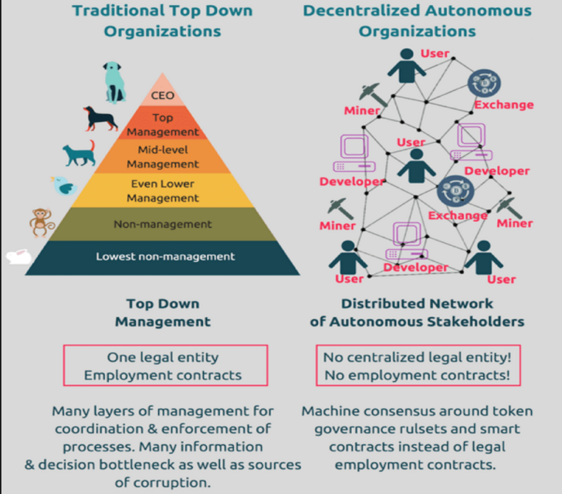
When we think of Roman architecture, what comes to mind? Colosseums, aqueducts, and basilicas—structures that stood the test of time. The Romans weren’t just building for beauty. They engineered for symmetry, durability, and public utility. Their aqueducts carried water across miles with remarkable precision, and their basilicas and forums became centers of civic life and governance.
Now, fast forward nearly 2,000 years. Today’s architects of generative AI face a very different medium—code and cloud instead of stone and marble—but the design questions aren’t so different.
In the world of AWS generative AI, the foundations are about scalability and modularity. Instead of concrete and arches, we build with services like:
- Amazon SageMaker for streamlined training and deployment, bringing together widely adopted AWS machine learning (ML) and analytics capabilities, the next generation of Amazon SageMaker delivers an integrated experience for analytics and AI with unified access to all your data. Collaborate and build faster from a unified studio using familiar AWS tools for model development in SageMaker AI (including HyperPod, JumpStart, and MLOps), generative AI, data processing, and SQL analytics, accelerated by Amazon Q Developer, the most capable generative AI assistant for software development. Access all your data whether it’s stored in data lakes, data warehouses, or third-party or federated data sources, with governance built in to meet enterprise security needs.
- Amazon Bedrock for direct access to generative AI models via APIs. Amazon Bedrock is a comprehensive, secure, and flexible service for building generative AI applications and agents. Amazon Bedrock connects you to leading foundation models (FMs), services to deploy and operate agents, and tools for fine-tuning, safeguarding, and optimizing models along with knowledge bases to connect applications to your latest data so that you have everything you need to quickly move from experimentation to real-world deployment.
- AWS Inferentia chips to deliver cost-efficient performance at scale. AWS Inferentia chips are designed by AWS to deliver high performance at the lowest cost in Amazon EC2 for your deep learning (DL) and generative AI inference applications.
Just as Roman engineers thought about structures that would last for centuries, AWS engineers design digital systems that can scale globally, adapt instantly, and endure change.
The underlying truth is timeless: whether in stone or in cloud, strong foundations determine what endures. Rome’s enduring arches echo in today’s scalable pipelines. Both ask the same question: what can we build today that will still matter tomorrow?



![Crypto Statistics [year]: Global Ownership & Adoption Data 1 Global Cryptocurrency](https://thesmallbusinessblog.net/wp-content/uploads/2022/03/Global-Cryptocurrency.png) Courtesy: Small business blog
Courtesy: Small business blog![Crypto Statistics [year]: Global Ownership & Adoption Data 2 cryptocurrency](https://thesmallbusinessblog.net/wp-content/uploads/2022/03/cryptocurrency.png)






